Introduction
Resurrection is an exciting topic.
Most people would consider coming back to life to be an incredible blessing. However, to the heroes of Dark Souls, returning to life is a responsibility. It represents a duty they have yet to fulfill. That’s the role that players who enter the world of Dark Souls take on.
Gamers of all stripes have heard tales of how difficult the games in this franchise are, and the board game is no different. Death might be where most games end, but it’s where this one begins.
Bottom Line Up Front: Dark Souls is a board game that will test your mettle, tactical thinking, acumen, and, most significantly, patience. However, much like the game that inspired it, there’s a grim satisfaction unlike anything else if you can make it through the complex parts.
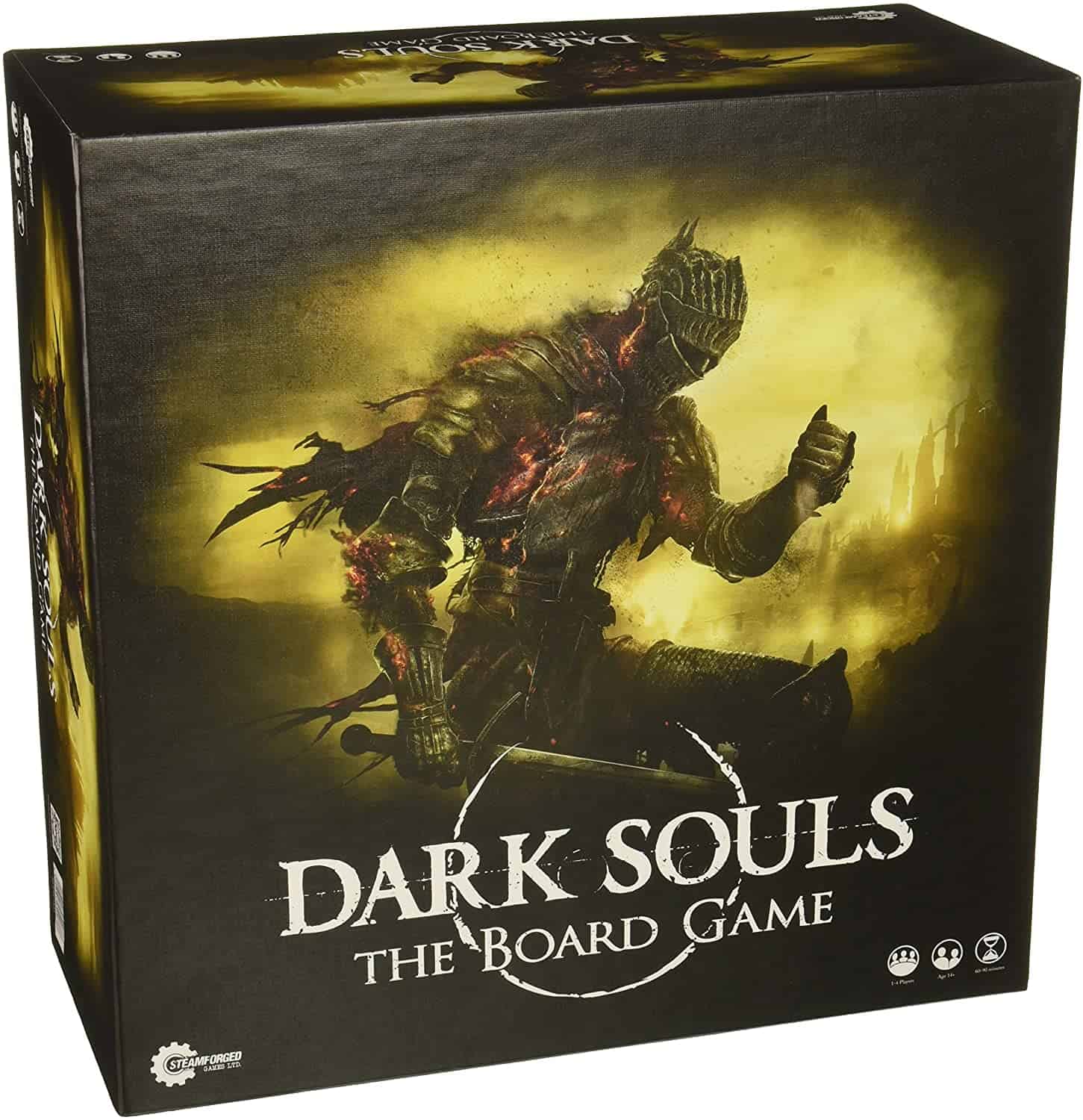
Choice of a Grim Fate (about the Game)
Dark Souls is a miniatures game about exploring, fighting enemies, and killing a boss. It occupies a middle point between a TTRPG and a more traditional board game, as it can be played like either.
The classic gameplay involves a player choosing minis representing individual character classes, taking the accompanying cards, and getting to the work of fighting enemies and saving the world.
This game is a cooperative “PVE” game. Players work together against the forces of luck and the board to try to win. The game encourages this spirit of cooperation by including different playstyles for all the Class cards that work best when used together. It also enforces it by ensuring the entire party will be penalized if one player falls in battle, incentivizing players to keep each other alive.
Players use dice to do battle against antagonists. If they manage to defeat them, they get stronger and get the chance to get better equipment to slay giant monsters. In a “normal” game, the players fight a boss at the end; if all players are left standing, they win.
The other option is to play through a Campaign.
A Campaign is a set of scenarios that the players can go through. Each scenario typically ends with one or more boss fights. After the completion of a scenario, the group’s equipment, levels, and sparks carry over to the beginning of the next one. The rules for two campaigns are included in the core game.
The game has had multiple expansions that included other campaigns, miniatures, and expanded rules, but this time around, we’re only focusing on the original game.
Gathering Kindling (What You Get in the Box)
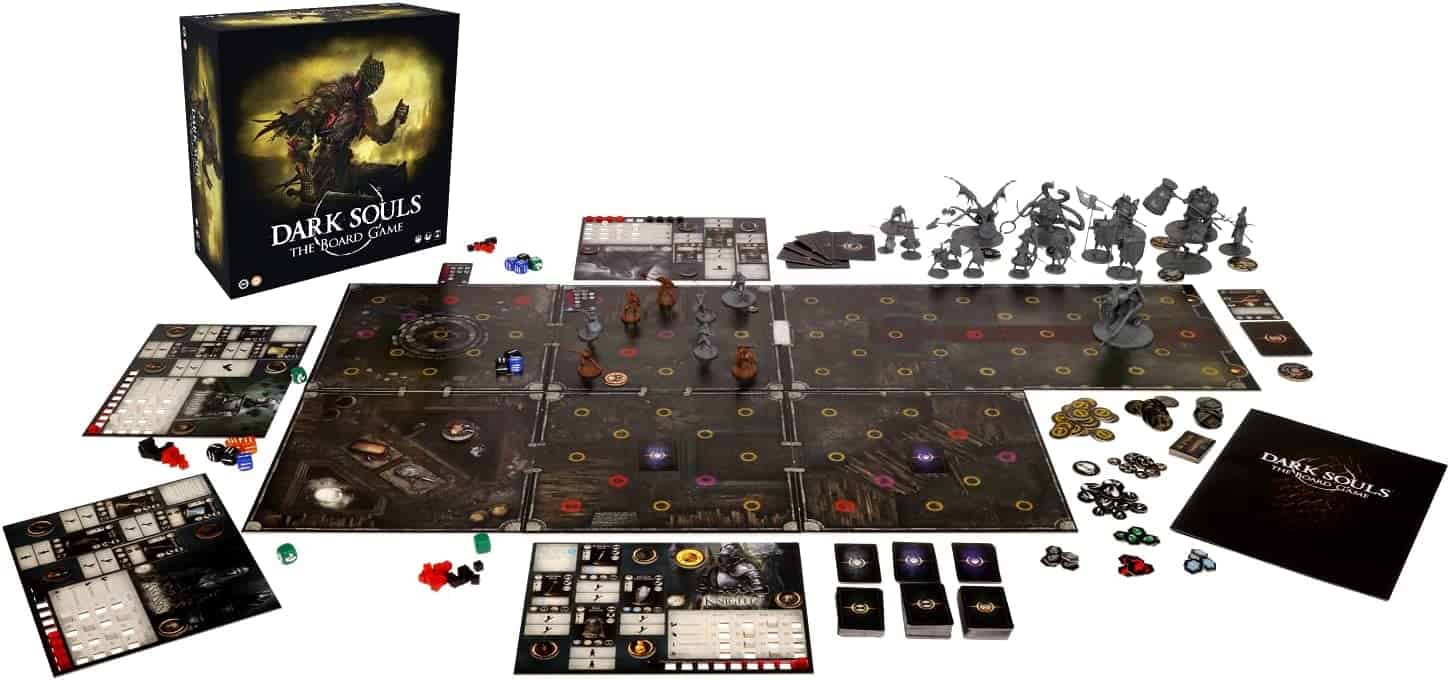
When you first crack this bad boy open, you’ll be confronted with a bonfire tile and six further exploration tiles. You’ll also find 27 miniatures that include the enemies you’ll face, the mini-bosses that command them, and the bosses that wait for you at the end of a long, harrowing journey. There are also 250 individual cards, comprising the cards that denote equipment and behavior cards for the bosses.
There are dials for boss health and cardboard tokens necessary for gameplay. Of course, this being a board game, there are dice. However, because this is Dark Souls, which means it has to be Extra, it has fifteen dice in four colors, each used for different things.
Sparking the Bonfire (Set Up)
Play sessions of Dark Souls are set up slightly differently, depending on whether players prepare the standard game version or a campaign scenario. The characters are chosen, the tiles are set up, and the decks are placed. If you’re playing through a campaign, you’ll already have your characters selected from equipment from previous scenarios, and those don’t change.
You then turn the spark dial to the appropriate number for your group size and choose a mini-boss to fight. The choice of a boss impacts not just the ending fight but also how many encounters of what difficulty between themselves and the Bonfire. The players then create the treasure deck out of standard treasure cards and cards relevant to the classes in play, and play begins!
Unlike many games, there is a second setup phase midway through a typical session of Dark Souls. After the players defeat the mini-boss (if they can before all sparks are used at the Bonfire), the first few steps repeat, except now the players are hunting the main Boss.
Dangerous Ground (The Tiles)
Every tile is marked by multiple circles called nodes. These dictate where characters and monsters stand after an encounter begins, as well as where enemy monsters spawn and various terrain features that can help or hinder characters are located. There are
- The Bonfire – This is always the tile that gets placed first, as this represents the home base. It’s where characters spend souls to buy upgrades, keep their spare equipment, and respawn if they die. This is also where the spark dial lives.
- Exploration Tiles – These represent different places within the game world. Each one is an individualized room and contains movement nodes. These dictate where characters and monsters can be placed in combat.
- Fog Gate Tile – The Fog Gate token gets placed on the tile furthest from the Bonfire, becoming the Fog Gate Tile. It represents the door to a boss room and has different conditions for its use depending on whether you’re playing a campaign or not.
- Mini-Boss Tile – A tile with unique artwork where the players fight the mini-boss.
- Boss Tile – A tile that denotes the battle arena where the grand finale encounter takes place.
Doom Is an Implacable Foe (Potential Bosses and Encounters)
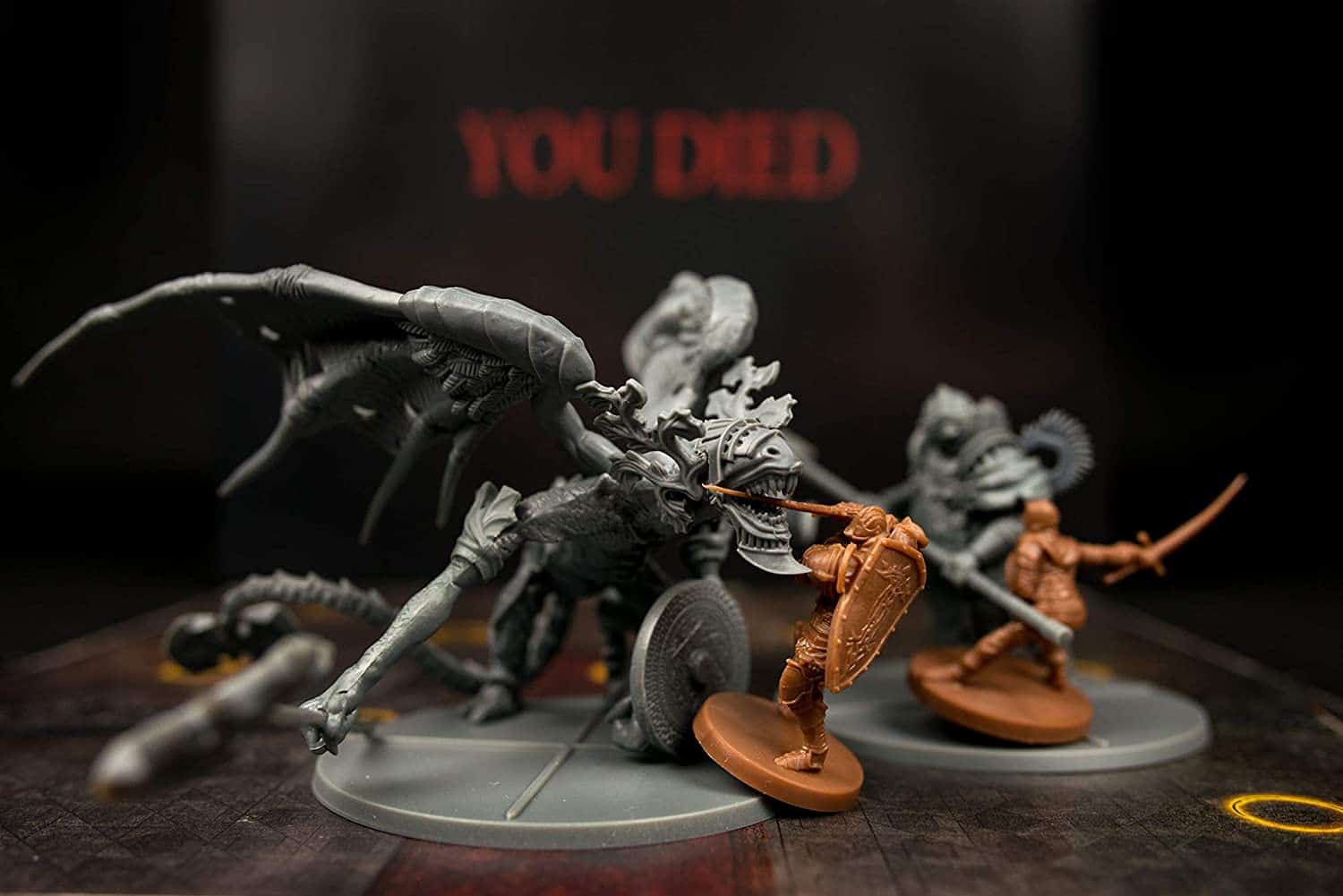
Fantasy Heroes are only as worthy as the foes they face. Fortunately, your foes are demons, beasts, and twisted abominations of once-holy knights. These are brief descriptions of the Boss encounters players might find in the Dark Souls Board Game.
The Mini-Bosses
- Boreal Outrider Knight – A former knight, the Outrider has been twisted into a violent avatar of cold fury. It focuses on fast attacks that deal incredible Damage to those nearest it while being immune to frostbite and bleeding damage.
- Gargoyle – This statue was created to guard the Profaned Cathedral and will accomplish that over your dead bodies. It wields the power of fire to burn away your Stamina, making it dangerous to attack the gargoyle.
- Titanite Demon – Demons that arose from Titanite Slabs. They wield enchanted catchpoles, wicked polearms designed to wrap around a person’s neck or limbs and drag them away. It is incredibly hard to deal Damage to this beast.
- Winged Knight – Large knights that once roamed the halls of Lothric castle. They use their surprising speed and agility to mercilessly harass players who wander into their demesnes. They wear down heroes with the weight of their onslaught, draining their Stamina at accelerated rates.
The Bosses
Slaying the Mini-Boss is only the halfway point, however. When they fall, they open the route to the true Boss of the scenario.
- Dancer of the Boreal Valley – A former maiden was forced to become a dancer. The dancer was made to become a commander of knights. The Commander was mutated to become a beast of fury and pain. That beast stands before you, wielding a flaming sword, ready to use its insane speed and close-range attacks to burn you to ash.
- Dragon Slayer Ornstein and Executioner Smough – A fallen champion and a dogged executioner. These two warriors were among the last to fall in their kingdom. Now, they stand before your heroes, a final challenge before they can continue their journey. Their teamwork is legendary, and one’s death will only strengthen the other as they fight in their fallen partner’s name.
Heroes Defiant of Death Itself (the Characters)
There are four character classes available in the core board game. Each has unique stats and equipment they can find throughout the game. They also have a unique special ability to be used once per “Spark.” (Essentially, they can use it once before they either die or rest at the Bonfire, either of which costs a Spark.)
Classes
- Assassin – The Glass Cannon of the group. The Assassin focuses much less on defending themselves and far more on dodging any attack that comes their way. Their class-specific equipment can give them benefits to dodge, Damage, and even some poison effects, among other things.
– Special Ability: Backstab – These nimble fighters can land a single attack against a foe after they’ve dodged.
- Warrior – The Warrior has a great attack and defense rating but a lower speed. They focus more on dealing damage than anything else, and the unique equipment they can find reflects that.
– Special Ability: Berserk Charge – The Warrior can move a single node without spending Stamina, and their next attack also costs no stamina.
- Herald – The herald’s primary focus is on faith, and that means they’re far more suited to being a supporting character than the other classes. They can be built into powerful offensive forces. However, they’re meant to be the “clerics” or “healers” of this game. (This becomes especially clear if they play alone, although it is still entirely possible for them to enjoy a single-player experience.)
– Special Ability: Perseverance – The Herald can cause each and every one of their companions to regain 2 stamina.
- Knight – The Knight focuses on attack and defense almost exclusively, with defense being the higher priority. They’ll end up being the group’s tank, which is reflected in their unique ability, high taunt stat, and potential equipment they can find. (These also have my personal vote as the “easiest” class to play your first time out. There’s no wrong way to play them!)
– Special Ability: Stand Fast – The Knight, after making a block roll, can gain an extra blue die and add it to the roll, further reducing the Damage from the attack.

The Parts that Become the Whole – (Stats)
The four “primary” stats on your character cards are only used to determine if your character meets or exceeds the requirements for the equipment you want them to use.
The most critical thing moment to moment on your character card is The Endurance Bar.
Two things will affect it, Damage and Stamina. Damage is something your enemies do to you and is marked right-to-left. Stamina is a resource you spend and is marked off left-to-right. If they ever overlap, your character is killed, the party is defeated, and everyone returns to the Bonfire.
IF There are any sparks remaining. If your group was on the last Spark? That’s all she wrote!
Instruments, Keen and True (Equipment)
The equipment gives you your combat numbers in Dark Souls, the Board Game. Each has a range for how far out it can attack and the type and number of dice it uses to do Damage.
Attacks in Dark Souls use three types of dice. Each of them has different ranges of Damage available upon them. Black dice can roll between 0 and 2 damage, Blue Dice can roll between 1 and 3, and Orange Dice roll between 1 and 4.
Different weapons will use varying amounts of dice and possibly mix dice types. They will also have various attacks that require different amounts of Stamina to be spent.
Trading Blows (Combat in Dark Souls)
Dark Souls takes a lot of its cues from the video game. That means that combat is fast-paced and brutal.
At least, it’s supposed to be.
The first few times you try to play the game will be spent stumbling over different dice and cards. You’ll find yourself checking and double-checking what the numbers and icons mean between the cards and the books. However, as with most things, practice makes it simpler. The more you play the game, the easier combat becomes.
Remember, this is just an elementary guide to the game. The Combat system is vibrant and in-depth. The more you read and learn about it, the more you’ll be able to do and the better you’ll feel about it.
When your party enters a new tile, the encounter card is flipped, the room is populated, and the monsters’ first activation begins.
(Don’t worry, an “Activation” is just a fancy word for a turn.)
Essentially, the Monsters all go on their turns, and the players each take a single turn at a time, moving in a clockwise fashion from the first player that the group chooses. This continues until all the enemies die or a character is killed. If the players are victorious, the player who would have been next is given a token to denote that they go first in subsequent encounters.
On their turn, Players can move up to one node for free. Any additional movement costs one extra Stamina per node. They then choose an attack from their currently equipped weapon, spend the Stamina, and roll some dice.
When someone tries to hit them, they can roll blue dice to block and shave some damage off or try to dodge. If they dodge, they roll the green dice, and if it meets the Dodge Difficulty of the monster, they’ve avoided all damage. If it doesn’t, they take all damage.
When it’s the enemy’s turn, common enemies will usually work off only the stats on their cards, while Bosses will use their behavior decks and unique abilities to make the fight more challenging.
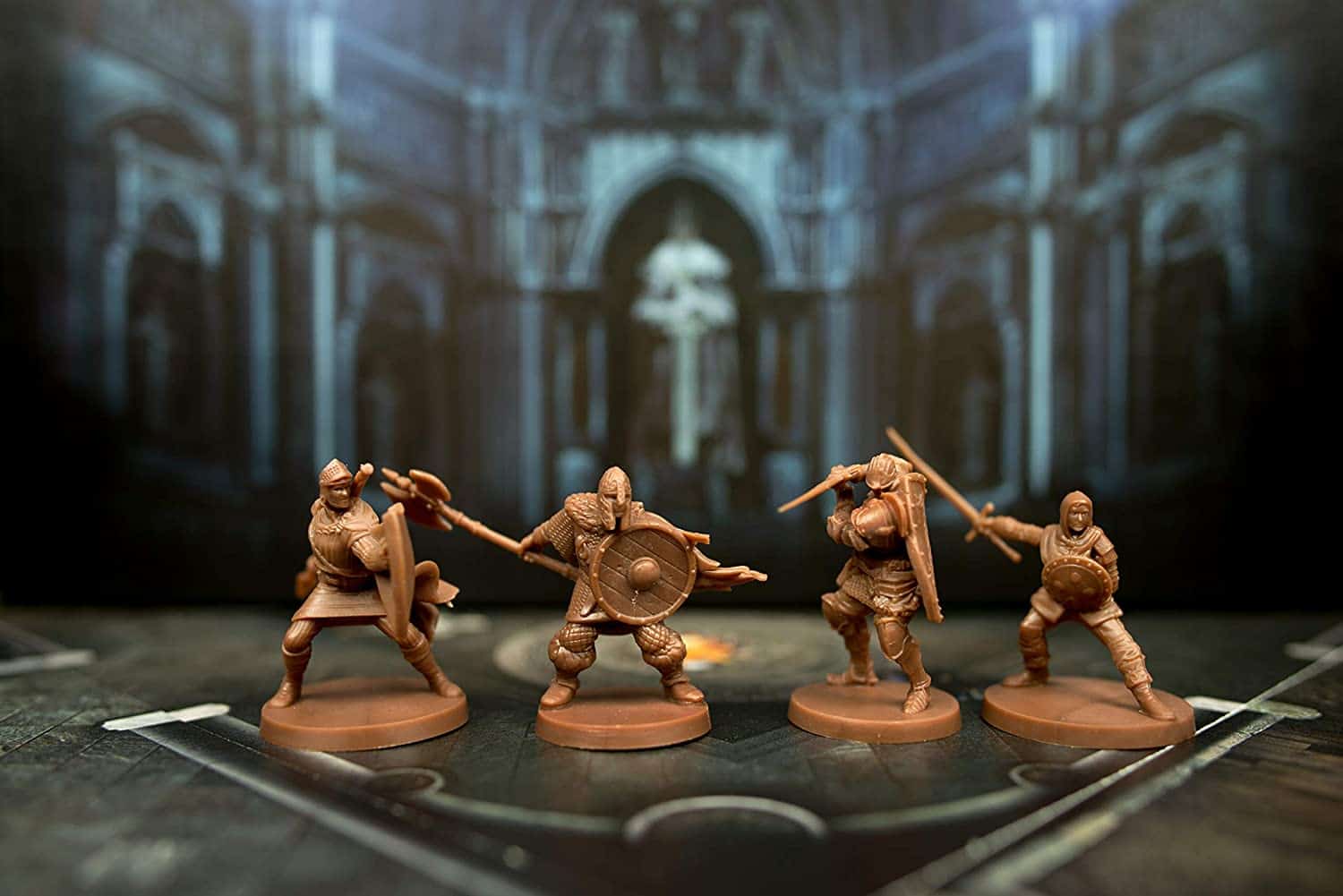
The Only Escape Is Victory or Defeat
While there are still Sparks in the Bonfire, there’s still a chance for victory. Every player’s death is a new chance for players to spend their souls on leveling up, upgrading their gear, and better preparing themselves for what awaits them.
Only when the last Spark is gone must the players be victorious or languish forever in defeat.
If You Require Rest, Now Is the Time: (Helpful Hints about the Game)
Dark Souls is a worthy inheritor of the name. It is a challenging game. However, you don’t have to go it alone. I may not be the most experienced, but if you’re here, I’m more experienced than you. Here are some general-purpose hints I’ve found helpful for the game.
- You should study the combat and run a few practice rounds. The more you do it, the faster you’ll go in-game.
- You WILL Die. It’s part of the game. Enjoy the process.
- Remember that you have the ability to move for a reason. Enemy ranges are really close.
- Make the enemies come to you.
- The 0-Stamina attack is ALMOST ALWAYS More cost-effective until the highest level of weapons.
- The exception is when facing bosses or if the weapon applies conditions like Bleeding or Staggered.
- If you can? Try to attack from behind. Many enemies don’t have attacks that hit a node behind them.
- Remember, this is a TEAM GAME! Luck always plays a factor, but you can mitigate the worst of it with good teamwork.
- Sparks are precious. Try to keep your teammates alive if at all possible. It takes less time to finish a fight once than have the board repopulate after a defeat.
- USE YOUR SPECIAL ABILITIES! It’s easy to forget them or think that they don’t matter. However, even a single point of damage can mean everything at the right time!
The Roads Untaken: (Alternatives to Dark Souls: The Board Game)
Dark Souls is an excellent game. However, it’s not the only RPG-inspired PVE board game on the market. Some others, ranked in no particular order, include:
1. Dungeons and Dragons: Castle Ravenloft
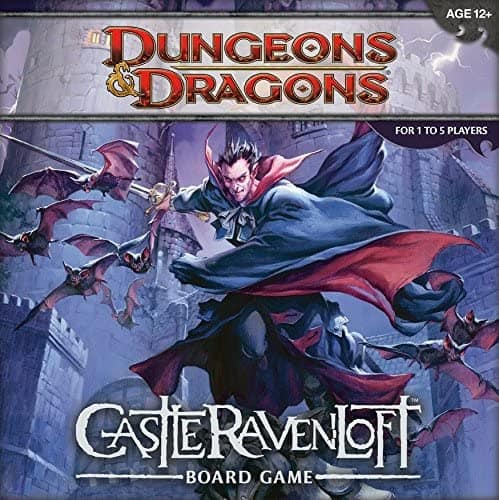
If you desire a Board Game inspired by TTRPGs, look no further. This is based on the oldest Roleplaying Game currently on the market, and it has several systems that will be very familiar to anyone who has played Dark Souls, the Board game.
Players take on the roles of classic Dungeons and Dragons classes, moving miniatures around the dungeon of Castle Ravenloft, seeking to slay the wicked vampire, Count Strahd. As they explore the dungeon, more tiles are added randomly from a pile. Each tile has a chance to spawn monsters represented by miniature models.
Players will gain levels, find equipment, and work together to accomplish goals in this board game adaptation of a classic D&D Campaign.
2. Zombicide: Black Plague

If you want the feeling of taking on a horde of undead without quite so much complexity, try the Black Plague edition of Zombicide. Players control iconic high-fantasy characters as they struggle to hold out against an endless wave of undead flesh.
The rules are deceptively simple to learn. However, you’re still controlling typical fantasy characters, gaining strength, finding new equipment, and fighting against the undead as they try to free land from the curse of undeath.
I’ll tell you flat out that this one is my choice if you want to play something very similar that your children will love and be able to play.
3. Gloomhaven
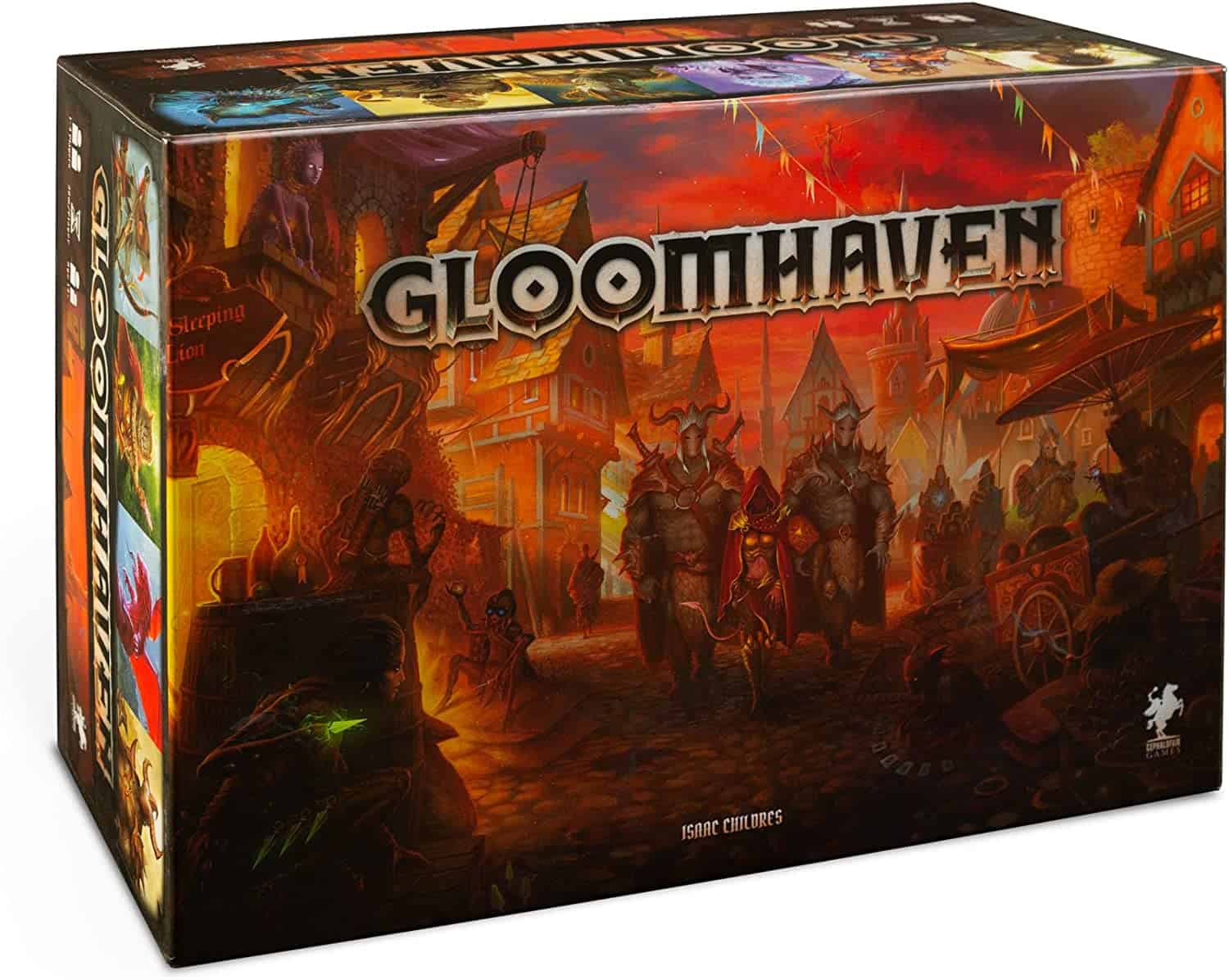
Gloomhaven is another Cooperative board game with a dark motif to it. It’s still a very complex game, but the complexity differs from Dark Souls. This is a Legacy game, meaning it can only be played once at its peak.
Players take on the role of individual characters in a fantasy scenario. As they reach milestones within the game, their characters will go into retirement, and new characters and options will “unlock,” allowing players a strange but linear path to growing in power.
It includes secret envelopes and hidden boxes, and secrets untold for players to uncover. It’s also similar in that it’s got a campaign system that can last through a few sessions with players.
4. Shadows over Brimstone

If you need something cooperative but don’t feel the need for fantasy? Try Shadows of Brimstone: City of Ancients. This is a dungeon-crawler board game that takes place in the Old West.
Players take on the role of classic Wild West archetypes like Lawmen, Saloon Girls, Gunslingers, and the like as they explore a mine near the town. The miniatures are very detailed and highly reminiscent of Dark Souls.
The combat is much less complex, though enemies still use a deck of cards to choose their attacks with a degree of randomness. A great game to play with friends if you want something creepy but don’t feel like grabbing a sword.
5. Kingdom Death Monsters
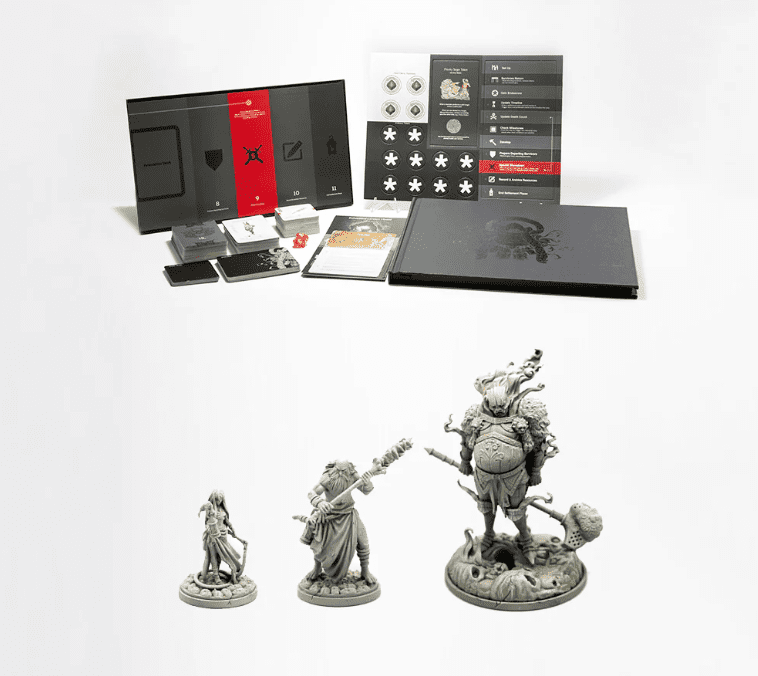
This game is like someone turned Dark Souls up to eleven for complexity, time commitment, AND money requirements. This game is EXPENSIVE!
However, you won’t find a closer option if you like Dark Souls. Players control miniatures in a gothic, fantasy atmosphere as they fight through a typical session or a heavy campaign. Instead of finding gear, players craft things from items they encounter along the way and parts of the monsters they’ve slain.
This game also has a very in-depth storyline that can be experienced by rolls of the dice, drawing of cards, and time elapsed in the game.
…Just don’t ask me to help buy a copy.
Last Rites
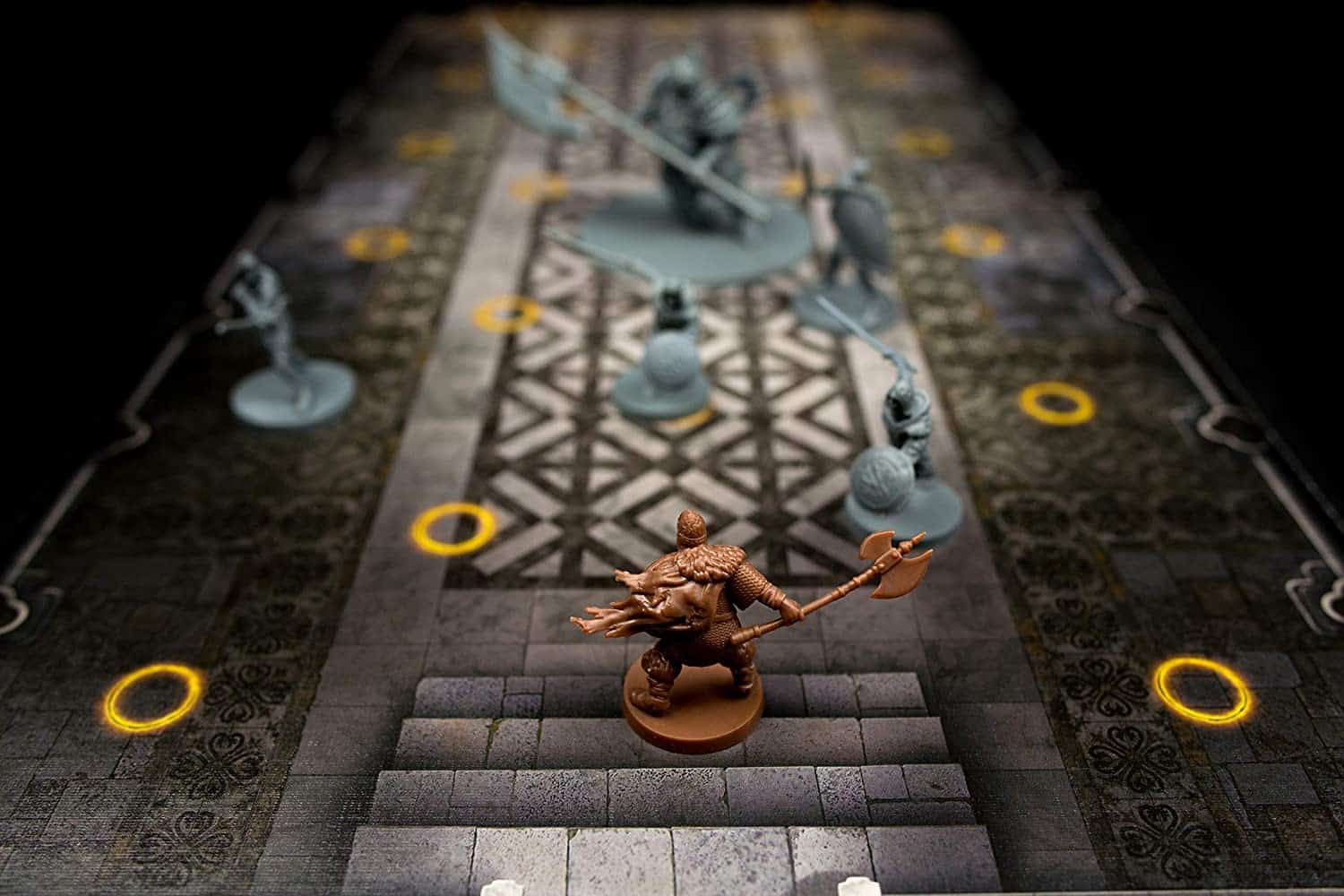
Dark Souls is a game that does its best to recreate the fun of the video game in a cooperative, tangible environment. In some ways, it does that really well. The models it includes are all perfect representations of their video game counterparts. In other ways, it could do better.
It also recreates the potential frustration of Dark Souls almost perfectly.
The game has a steep learning curve. Most people who play it will likely either be fans of tactical board games or of Dark Souls itself, and they’ll feel right at home. However, the average player may not have the attention span or mental energy necessary to learn the Dark Souls board game’s overly complex and sometimes complicated rules.
Those who take the time to put themselves to the test will find no end of satisfaction in this game. It’s almost a perfect recreation.
I just wish it didn’t make me yearn for the “You Have Died” screen while reading through the instruction booklet.
Looking for more interesting readings? Check out:
- Best Dark Souls Board Game Expansions – Into the Darker Depths
- Best RPG Board Games
- Best Video Game Inspired Board Games
- Best 1970s Board Games: Playing on the Flip Side - July 5, 2023
- Best Economics Board Games: Ruining Friendships and Emboldening Cut-throats - June 3, 2023
- Top Vintage 1960s Board Games: What’s Your Bag? - May 27, 2023

